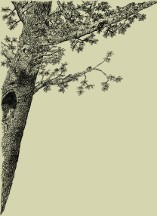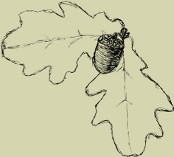42 41 40 39 38 37 36 35 34 33 32 31 30 29 28 27 26 25 24 23 22 21 20 19 18 17 16 15 14 13 12 11 10 9 8 7 6 5 4 3 2 1
Zeszyt 25 (1995)
One of the factors which influencing the shear strength of the adhesive bond is its linear elasticity coefficient. This paper presents an indirect method of determining elastic traits of adhesive bonds with the aid of numeric calculations. Four types of glues were examined and values of their linear elasticity coefficients were approximated.
Flakeboards made of three-, four-, and six-year sengon woods (Paraserianthes falcataria) were used for testing the resistance to fungal attack. Dried flakes were immersed in acetic anhydride and subsequently heated at temperature of 120°C for 24 hours. The weight percent gain was 23%. In addition, control flakes were prepared without any treatment to serve as control. Phenol formaldehyde was used as adhesive, the amount was 10% based on oven dried flakes weight, and flakeboard density was 500 kb/m3. The flakeboards were inoculated with Schizophyllum commune fungus for two months [1] and subsequently tested to determine their weights, modulus of rupture, and modulus of elasticity losses. The weight loss was based on oven dried condition, but MOR and MOE were compared to equilibrium moisture content condition.
Usefulness of simple processes based on polyethylene glycols 400 and 4000, sucrose and mixtures of those preparations application for waterlogged wood preservation has been tested. Pine sapwood, pine heartwood, birch wood, oak heartwood and oak wood full cross section (sap- and heartwood) were used for those tests. Efficiency of tested methods was evaluated basing on the cross section shrinkage, anti-shrink efficiency (ASE) and visual estimation criterion. In all tested variants evident reduction of treated wood shrinkage was noted down. Considering the existence of deformations and numerous cracks, conservation of heavily degraded birch and oak with the participation of decayed sap-layer has been evaluated negatively. Usefulness of chosen processes for waterlogged pinewood and oak heartwood dimensional stabilization has been stated.
The object of studies was to find possibility of valorization of Cocos nucifera wood, especially from the zones of wood with low density. Four wood density zones were distinguished: 320, 370, 410 and 480 km/m3.
The valorization of cocos palm wood was conducted on the way of creation wood-polystyrene material composite. On the base of research results analysis, it has been found that the properties of Cocos nucifera wood from the zones characterized by low density, could be considerably improved even in respect to the properties of wood with high density sampled from the outside zone.
The tests have shown, that the cocos palm wood is suitable for production of composite, and properties of wood from inside zones are characterized by the low quality, what limits its practical suitability, could be valorized above properties of wood from external zone characterized by high density and good quality.
The treatment of timber with monomers for the production of lignomers with improved technological properties and biological resistance has been investigated in detail. Attempts are now being made, to apply the procedure also to bamboo and rattan in order to produce value-added products. The efficiency of monomer penetration depends on the anatomical structure of the material to be treated. The structural parameters of bamboo and rattan in comparison with wood are elaborated. Practical consequences regarding the modification of bamboo and rattan by monomer impregnation are outlined.
The relationship between wood strength in parallel to the grain compression test and in perpendicular to the grain tensile test were investigated. Perpendicular to the grain tensile strength was determined in diametral compression test with cylindrical samples. The samples of the same type were used for parallel to the grain compression test. Experiments included test on 13 wood kinds, both softwoods and hardwoods. The increase in across to the grain wood tensile strength was observed, particularly in tangential direction, corresponding to increase in its along to the grain strength. The dependence was of linear nature.
Acoustic emission (AE) was investigated during 3-point perpendicular to-the-grain bending test. Experiments were carried out with green and air-dry beech wood. While air-dry wood tested it was revealed that AE signals appeared at stress level equal to proportional limit. AE signals number is growing asymptotic when non-linear segment of deflection-load curve is increasing. During green wood bending AE appears practically in the moment of rapid (catastrophic) material failure. The results of experiments suggest that there a defined threshold of elastic energy exists. When that energy value is reached the process of wood failure starts.
The modified agar-block and soil-block methods were used for comparing the fungitoxic value of QAC and CCA type preservatives against Coniophora puteana and Coniophora olivacea. The mass loss and moisture contents of wood were analysed.
The mass loss of wood used as the criterion in the standardized agar-block methods of evaluation of toxic value of preservatives depends upon the relationship between the volume of specimens, their outspread planes and ratio of areas of particular anatomic sections. Upon the computer-assisted mathematical basis the dimensions of miniaturized specimens which make 1/2, 1/4, 1/8 part of standardized ones were calculated. With correspondingly shortened times of exposition on the activity of Coniophora puteana the determination of the fungitoxic value of the CCB type preservative was performed.
Miniature pine and beech wood samples were exposed under the laboratory conditions to actions of the Chlorhormidium flaccidum and Chrorocococcum lobatum Algae. After the exposition period mass loss of wood were determined. A slight statistically proved effect of aerophytes on wood mass loss in this respect was observed.
Ten various fungicides applied in the plant protection against pathogenic fungi were subject of laboratory tests to determine the possibility of their use as active components of wood preservatives. The screening agar-block method was applied using the accelerated aging test. The properties of the preparations tested were determined in relation to brown, white and soft rot fungi and mould fungi.
Attempts were made to introduce to the structures of resin acids of new function group by the way of ethoxylation of rosin. Presence of the hydroxyl group in ethoxylate will change physico-chemical properties of resin and will Neale its modification by the new groups of chemical compounds. Ethoxylation was carried out at low molar ratio of theylene oxide to rosin, namely in the range 0.0-3.0. Together with the increase of molar ratio of ethylene oxide to rosin in substrates are decreasing: softening point, viscosity, and acid number of product, and most fast drop has been observed in the range of molar ratio of substances 0.0-1.0.
In the paper contained are results of the studies made in Institute of Wood Technology and it is linked to the world science novelties of the quest for the optimum technological processes of production of active carbons with the physico-chemical method. Laboratory studies have had been made with the application for impregnation the solution of phosphoric acid and for thermal processing single-shelf furnace with the mixer.
It has been studied to what extent the change of value the coefficient of impregnation defines properties of active carbons obtained from oak postfurfural cellulose with the use of impregnation method. The studies confirmed of deciding effect of impregnation coefficient upon the change of properties of the active carbons obtained with this method. Decrease of the value of impregnation coefficient causes drop of capillars volume and transient pores, and louring value of the methylene number and increase of ash content. The method of production of active carbons with the impregnation method with simultaneous use of residual phosphoric acid has been patented.















 Pobierz PDF
Pobierz PDF